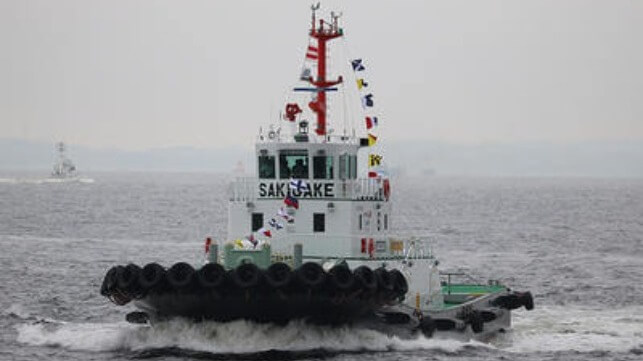NYK Repowers Japan's First LNG-Powered Tug to Run On Ammonia Instead

Japanese shipowner NYK has taken delivery of an ammonia-fueled engine for use in a tug application, and it is tearing out the LNG dual-fuel engine of Japan's first LNG-powered tug to make a testbed.
The tug Sakigake was the first LNG-fueled vessel of its kind in Japan. With support from the Japanese government, it was constructed by NYK's Keihin Dock Co. and delivered to NYK in mid-2015, and it was put into service in Tokyo Bay. At the time, it was considered a technical achievement, since fitting a complete LNG fuel storage and delivery system into the small hull of a tug is a difficult feat of marine engineering.
For the new conversion, Keihin Dock Co. is cutting into the tug's engine room to remove the existing LNG-powered main engine. It will install a new ammonia-powered engine, supplied by IHI Power Systems, and the tug will be returned to service in June.
IHI Power Systems’ Ota Plant began testing the 280mm-bore, four-stroke ammonia engine in April 2023. It is designed to run on 20 percent diesel / 80 percent ammonia, and it is paired with exhaust aftertreatment to eliminate unwanted nitrogen-based emissions from ammonia combustion. In particular, the testing verified near-zero emissions of dinitrogen monoxide (N2O) and unburnt ammonia.
A parallel project aims to adapt the technology to a 250mm-bore engine for use on an auxiliary engine, which will be installed aboard an ammonia-fueled ammonia carrier, currently under development for delivery in 2026.
IHI is developing a range of engines powered by ammonia, from diesel-cycle internal combustion engines up to gas turbines for powerplant applications. In 2022, it achieved the first trial run of a gas turbine on 100 percent pure ammonia. It is working on a commercialized version of the turbine system for sale by next year.
In years to come, Japan is expected to draw down 20 million tonnes of green ammonia per year for consumption in its coal-fired powerplants, creating immense demand for the green hydrogen-derived fuel from a nascent global market.
No comments:
Post a Comment